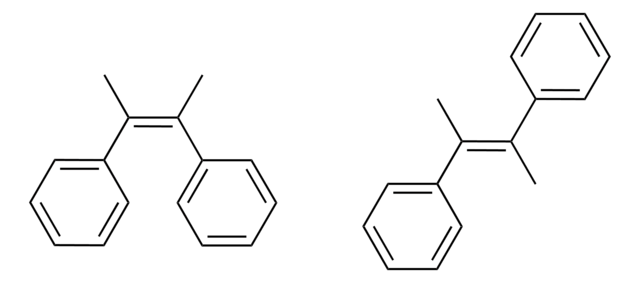725684
Poly(ethylene glycol) dimethacrylate
average MN 10,000, cross-linking reagent polymerization reactions, methacrylate, ≤1, 500 ppm MEHQ as inhibitor (may contain)
Synonyme(s) :
Polyethylene glycol, PEG dimethacrylate
About This Item
Produits recommandés
Nom du produit
Poly(ethylene glycol) dimethacrylate, average Mn 10,000, contains MEHQ as inhibitor
Forme
powder
Poids mol.
average Mn 10,000
Contient
MEHQ as inhibitor
≤1,500 ppm MEHQ as inhibitor (may contain)
Pertinence de la réaction
reagent type: cross-linking reagent
reaction type: Polymerization Reactions
pb
>200 °C/2 mmHg (lit.)
Température de transition
Tm 56-61 °C
Mw/Mn
≤1.1
Extrémité Ω
methacrylate
Extrémité α
methacrylate
Architecture des polymères
shape: linear
functionality: homobifunctional
Température de stockage
−20°C
Chaîne SMILES
OCCO.CC(=C)C(O)=O
InChI
1S/C10H14O4/c1-7(2)9(11)13-5-6-14-10(12)8(3)4/h1,3,5-6H2,2,4H3
Clé InChI
STVZJERGLQHEKB-UHFFFAOYSA-N
Vous recherchez des produits similaires ? Visite Guide de comparaison des produits
Catégories apparentées
Notes préparatoires
Code de la classe de stockage
11 - Combustible Solids
Classe de danger pour l'eau (WGK)
WGK 1
Faites votre choix parmi les versions les plus récentes :
Certificats d'analyse (COA)
Vous ne trouvez pas la bonne version ?
Si vous avez besoin d'une version particulière, vous pouvez rechercher un certificat spécifique par le numéro de lot.
Déjà en possession de ce produit ?
Retrouvez la documentation relative aux produits que vous avez récemment achetés dans la Bibliothèque de documents.
Les clients ont également consulté
Notre équipe de scientifiques dispose d'une expérience dans tous les secteurs de la recherche, notamment en sciences de la vie, science des matériaux, synthèse chimique, chromatographie, analyse et dans de nombreux autres domaines..
Contacter notre Service technique





